All you need to know about your products!

| 3DNews Vendor Reference English Resource - All you need to know about your products! |
||||||
 |
||||||
|
|
||||||
A Roundup of Coolers for Pentium 4: Q4'2003Author:Date: 27/01/2004 The emergence of first Prescott processors once again revealed that the problem of heat emission is increasingly hampering the rise of clock speeds. To put it right, the major problem is the increased of leakage currents, and the increased heat emission is the consequence of this phenomenon. However, that does not change the fact of the matter: everyone who buys computers in 2004 will face the need for effective cooling. While the PC enthusiast can afford a cooler at $30-$40, the common user at best puts aside $10 of the budget for a cooler. At the same time, for this money the user would want to get an absolutely noiseless cooling (which is a sensible decision). Snatching these trends, cooler manufacturers are increasingly focusing on coolers with the variable fan rotational speed. In particular, today we'll be looking into three coolers like these: FSP, Igloo Diamond 4200 and a new version of the "boxed" cooler. Then - to improve the cooling efficiency, the manufacturers are increasingly using copper and copper alloys. However, don't forget that Pentium 4 already has a copper heat spreader, so it's unlikely to give any essential boost in the cooling efficiency. FSP CPU CoolerThis cooler is part of the proprietary "FSP Silent-Solution Kit". 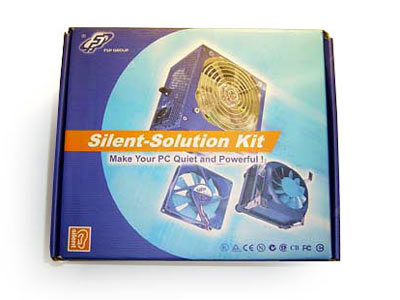
On the face of it, the cooler leaves a good impression: the fan and the radiator frame are painted in the same color. 
A tub of thermal paste, a limit frame for the processor socket and a strengthening plate are enclosed to the cooler. The latter plate is necessary to prevent the motherboard from bending. 
The numerous radiator fins are fully made of aluminum, and the base is made of copper. 
The processing quality of the base is pretty middling; even poor. For Pentium4 coolers, this is not the most important factor. 
To prevent copper oxidation, the base is coated with a thin layer of nickel. You can easily find that out through using a drill :). 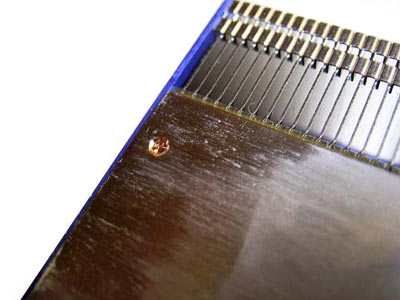
As regards the fan, it features one peculiarity: the unusual bend of the fins which, by the conception of engineers, should reduce the noise level. 
Besides, the fan offers a variable rotational speed which depends on the air temperature inside the PC housing. A respective thermal sensor is fitted near the rotor. 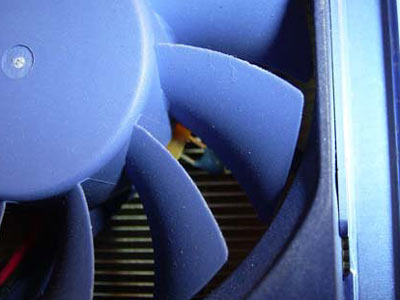
Therefore, the fan offers a ~3500 rpm rotational speed, and the maximum airflow equals 29.8CFM. The noise level does not exceed 30 dBa. We were unable to get precise characteristics, since the company's website gives only the brief specifications of the cooler. This is no wonder, though: the core produce of FSP includes only various power supply units. During the tests, we detected a distinct rotor noise which is audible even at the minimum rotational speed. There aren't any problems with fitting and removing the cooler: the metal fasteners are flexible enough. All in all, this is a classical cooler for Pentium4, which offers some advantages over the "boxed" version (copper base and more convenient fasteners). Spire EasyStream III and QuieTude IIHere are two coolers by Spire whose produce is quite rare on the Russian market. The coolers are thoroughly packaged in boxes of one style. 
In particular, there are plastic lids fitted on the top and the bottom of the cooler. While the purpose of the bottom lid is evident (to protect the base and the thermal interface), it's not clear what use the top lid is for. 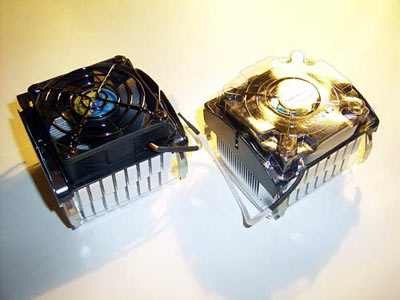
By design, both coolers are the same: on the radiator, there is a massive plastic frame on top of which there is a fan and a lever. The lever is used for fastening the cooler on the processor socket: when moving it, special "tabs" run into the holes of the socket plastic frame. Thus, the coolers is fixed and pressed to the processor. 
As regards the radiator, it is fully made of aluminum in the EasyStream model, and that of the QuieTude model has a copper insert in the base. Also note the numerous vertical saw cuts which slightly increase the surface area of the radiator. 
On the base of the radiators, there is a layer of thermal interface which by quality is not inferior to KPT-8 thermal paste. But by its adhesion the thermal interface surpasses the domestically produced thermal paste: as a rule, on removing the cooler the processor is pulled out of the socket and remains stuck to the base :). 
The processing quality of the base is good enough, albeit not of mirror gleam. 
As regards the fans, on the EasyStream III model there is a 70 mm fan (height = 15 mm) with the rotational speed 3700 rpm and 29.7 dBa noise level. The airflow = 28 CFM. On the QuieTude II model, there is a 70 mm fan (height = 25 mm) of variable rotational speed (within 3000 to 5500 RPM). The noise level fluctuates within 21.0 to 43.0 dBa, and the airflow - within 25 to 50CFM. Note that on the fans there is a protective grid which protects the work area of the fan against foreign matters (like wires or fingers :-). Spire RackSper IIIHere is another cooler by Spire which quite different from the previous models. It has a fully copper low-profile radiator, so its height does not exceed 30 mm. In fact, there is no wonder about that - the cooler is meant for rack-mountable 1U servers. The cooler is thoroughly packed in a double layer of foam-rubber and plastic. Besides, in the box there is a syringe of thermal paste and fastening clips. 
The cooler radiator is a thick copper plate with a great number of welded copper fins. 
As regards the processing quality of the base, it is comparable to the mirror-gleam. 
There aren't any problems during the installation. 
The fan's dimensions: 60x60x10 mm; rotational speed 4800 RPM. The noise level does not exceed 30 dBa, with the air flow being 22.21 CFM. The interim conclusion is: the Spire RackSper III is a highly tailored product which is of little interest to the common user. Anyway, due to the fully copper radiator the cooler may be of interest to the amateurs of various modifications (e.g., the cooler may be of use to improve cooling on the video card). Glacialtech Igloo 4350 (Pro, Light)Some time ago, we tested a few coolers by Glacialtech (those were Igloo 4300 & Igloo 4200) and found no advantages over the "boxed" cooler. Today we're looking into a new product line of the company which is based on the generic model Igloo 4350. 

The Light model is aimed at the silence fanciers, while the Pro model, on the contrary, will be of use for the owners of powerful/overclocked processors. 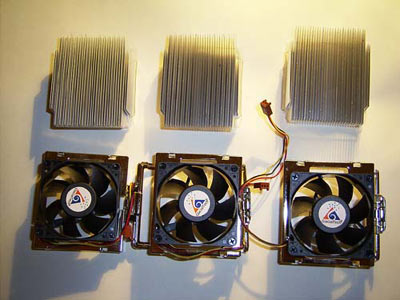
In fact, all the three coolers offer the same design and the same radiator. The differences are only in the fan: 
On the "Pro" model, there is a fan of 4200 RPM rotational speed. At this speed, the airflow will amount to 40.1CFM, with the noise level not exceeding 35dBa. 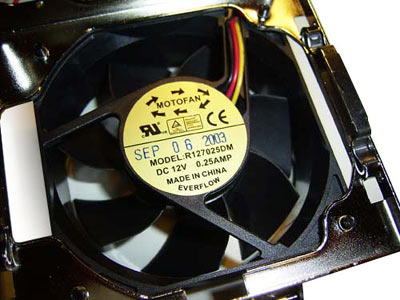
In practice, Igloo 4350 Pro makes quite an annoying noise. But for those who are primarily concerned by the noise level Glacialtech offers an absolutely silent cooler - Igloo 4350 Light. Its noise level is as low as 20dBa. That's a very good showing achieved due to the reduction of rotational speed to 2200 rpm. Of course, the generated airflow has also gone down (to 21CFM). 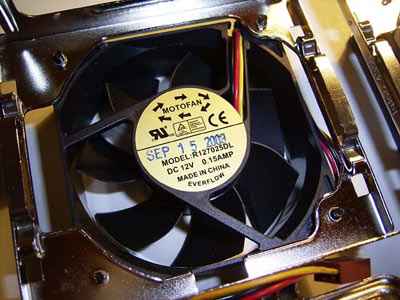
Besides, note that the manufacturing company does not recommend using the cooler with processors whose clock speeds exceed 2.8 GHz. Remember that the question is of the Northwood core. But if you buy a cooler targeted at joint use of a Prescott processor, then in the long run buying an Igloo 4350 Light cooler is not a wise option. This can't be said about the Igloo 4350 cooler which offers the best ratio of noise to cooling efficiency. 
The rotational speed of the fan is 2800 RPM, airflow = 24.3CFM, with the noise level not exceeding 26 dBa. As regards the radiator, it is fully made of aluminum. However, that should not negatively affect the efficiency. Remember that Pentium4 offers a copper heat spreader that equalizes the chances of aluminum-copper and pure aluminum radiators. 
The processing quality of the base is very good. Besides, a layer of thermal interface not inferior to KPT-8 paste is pre-applied on the base. Like in Spire coolers, the removal of the cooler is accompanied by pulling the processor out of the socket: this thermal interface proved to be so sticky. 
As regards the convenience of installation and removal, then the cooler of Igloo 4350 series proved to be up to the mark. The smart design of the fasteners used on Igloo 4300 and Igloo 4200 models allows installing the cooler with a single motion. Interim conclusion: of the three presented coolers, the most attractive is the generic model Igloo 4350. Besides, of interest may be the Igloo 4350 Pro version using a speed regulator. This allows smooth selection of the required balance between the cooling efficiency and the noise level. But Igloo 4350 Light looks attractive only if mid-range processors are used. Glacialtech Igloo 4200 DiamondThis is another cooler made by Glacialtech which is very similar to the Igloo 4350 series coolers. At the same time, it offers several substantial advantages, which need to be covered on a separate page. 
First, the cooler radiator and the fastening frame are coated with a layer of gold of total mass 24 carats (as per the manufacturer's statement). 
The design of the radiator and frame is fully identical to the Igloo 4350 cooler. 
The other distinction is about the fan: the main distinctive feature is the variable rotational speed which depends on the air temperature inside the PC housing. 
The range for adjusting the speed varies within 2200 to 3400 rpm. The airflow fluctuates within 18.8 CFM to 29.2 CFM, with the noise level within 20 dBa to 38 dBa. 
Such specifications make this cooler appropriate for use with processors of clock speeds no higher than 3.2 GHz. 
Interim conclusion - the Glacialtech Igloo 4200 Diamond cooler is most like an image-making model, if such a notion is applicable to the processor cooler. In fact, the function of automatic variation of the fan's rotational speed - is an advantage over the Igloo 4350 series coolers. Titan TTC-CU7TBAnother cooler aimed at low-profile 1U systems. Along with the cooler itself, the box contains a strengthening plate, a pack of fasteners and a tub of proprietary thermal paste. 
The radiator is fully made of copper and is made up of a thick base on which short fins are welded. 
As regards the radiator base, its processing quality is good enough (8/10). 
The 60 mm fan of the Titan CU7TB cooler has the following parameters: the rotational speed is 4800 rpm, with the maximum air flow being 20.26 CFM. The noise level does not exceed 36 dBa. Interim conclusion - the area of application of this cooler is restricted to the small sector of U1 servers. It makes no sense using it in regular "desktop" systems because of the relatively poor efficiency. The cause of that is the weak fan and the small radiator area. 
In fact, this radiator can be successfully used for various modifications. This can be replacement of cooling on the video card or manufacture of radiators for memory modules. New "boxed" Intel coolerIncreased heat emission of processors resulted in that Intel had to look for new approaches to improving the cooling system. This mainly applies to the optimization of airflows: the BTX-format case was presented for the public judgment. However, a long time will pass until the new cases are introduced everywhere, but for now the company is trying to improve the design of the processor cooler. First owners of the first Pentium4 3.06 (stepping C1) processors have got the opportunity to estimate the efficiency of the new "boxed" cooler. 
The main distinction from the "old" design (some time ago we tested such a cooler) is in the massive copper plate installed on the cooler base. 
The job of the copper plate is to maximally spread heat off the processor core to the aluminum fins. Such a technical solution demonstrates the best efficiency with open-core processors. But on Pentium4 processors is originally closed with a heat spreader (a nickel-plated copper plate) which protects the core against mechanical damages. But the cooling efficiency of an aluminum-copper cooler will not be much better than that made fully of aluminum. 
As regards this cooler, its efficiency seems dubious because of the poor contact between the radiator fins and the base. Each fin is deepened into the base by approximately one fourth; besides, no interface is there in the contact point. 
In all the other respects, the designs of "old" and "new" coolers fully coincide. 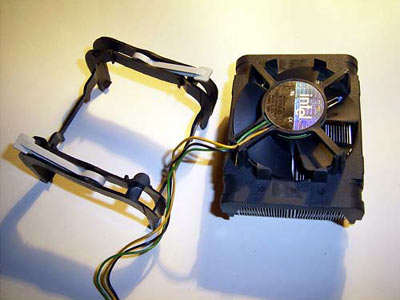
In particular, to fasten the cooler to the socket, a quite awkward system with a fastening frame is used. In installing the cooler there aren't any problems: the fastening frame catches on the plastic frame of the socket, and the cooler is strongly pressed to the processor with levers. But to remove the cooler, you've got to apply much efforts - you've got to squeeze every clinch of the frame with a screwdriver. As regards the fan, its dimensions haven't changed. But it has turned more noisy due to the increase of the average rotational speed. I intentionally mentioned the average speed: the fan is able varying the speed depending on the air temperature inside the housing. 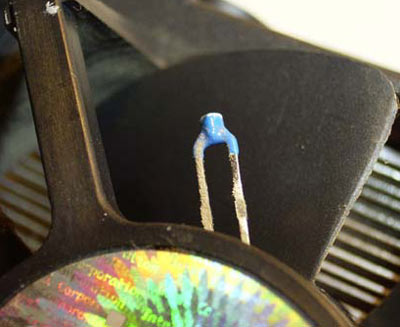
Such a solution is not the most optimum: in increasing the load upon the processor, the fan will increase the rotational speed in only a while after. From this viewpoint, Titan W5TB(TC) in which the fan's thermal sensor is based in the radiator base looks more attractive. Interim conclusion - this cooler will most likely cope with processors that run at nominal clock speeds. But you you would have to look for a more efficient cooler if you intend to overclock the processor. By the way, one more version of the "boxed" cooler was developed in Intel's workshops: 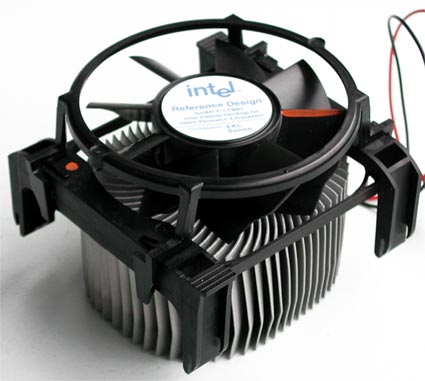
Most likely, the higher-end Prescott processors will be equipped with such a cooler. However to date it is extremely difficult to make it available in the retail. TestsWe tested all the coolers with an Abit IC7-G motherboard; and for the monitoring utility we used Motherboard Monitor. We also took Intel Pentium4 2.4 stepping D1 which ran at 3.0 GHz without raising the voltage. The processor was heated up with two running instances of BurnP6. The two running applications allow to full out the processor with work (remember that stepping D1 processors offer support for the HyperThreading). Then, the testing system was assembled in an Inwin S506 housing, with the PSU brought outside. This PSU has a fan of variable rotation speed (depending on the temperature), and its close proximity to the cooler might affect the measurement results. If the cooler had its own thermal interface, it was removed and then we measured the readings with the silicon-organic paste KPT-8. As the "unattainable ideal" there acts a super-costly and huge Zalman 700Cu. Well, this is the efficiency of cooling a Pentium4 3.0 GHz processor. 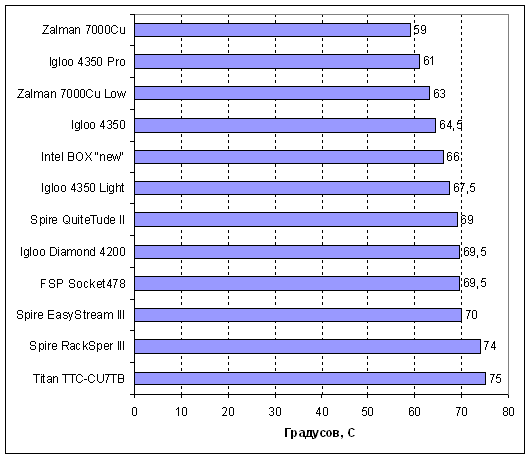
Of all the coolers reviewed today, the Igloo 4350 line appealed to me most. In terms of the "price/efficiency" ratio, Igloo 4350 Pro proved to be the best, and at the "price/noise level" ratio Igloo 4350 Light is the best. The combination "Igloo 4350 Pro + a voltage regulator" is able to fully satisfy both the fanciers of silence and overclockers. But the overclockers should keep it in mind that overclocking with voltage raise implies immense heat emission. Starting from a certain point )Vcore >= 1.6V), a cooler with the aluminum radiator may not cope with the cooling job. By the way, in the hardcore overclocking (clock speeds >= 3.6GHz, Vcore >=1.65V) even copper gives way: there rises a need for "heat pipes"and water cooling (for more detail, read the review on Thermalright SP-94). Then, I didn't like the "new boxed" cooler all that for its middling cooling level and high noise level. I also disliked the Igloo Diamond 4200 - although the noise level is relatively low, the cooling efficiency leaves much to be desired. The same can be said about the cooler from the "FSP Silent Solution Kit". Finally, I didn't like the Spire EasyStream III and QuieTude II coolers: despite their low noise level, their cooling efficiency is very low. As regards low-profile Spire RackSper III and Titan TTC-CU7TB coolers, they came to our test lab by chance. The thing is such coolers are installed solely into U1 servers which run in quite specific conditions. But in small-scale desktop computers (like so popular barebone systems) they either install standard coolers or cooling systems with heat pipes. Read more on this topicAddress your questions, wishes and suggestions to the conference. |
|
|||||